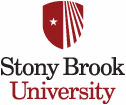
Spring 2014
Schedule
Syllabus
MAT 517 / MAE 330 Technology in Math Education - Fall 2014 -Syllabus |
|---|
|
Instructor: Moira Chas - 3-119 Math Tower Email: moira dot chas "at" stonybrook.edu Office hours:
|
| Overview: We will discuss
how technology can be used in the teaching of mathematics. The goal of the course is to learn to use technology
Since technology changes really fast, our focus will be more on to "learn how to learn" as opposed to mastering particular technology. (For example, using the help button efficiently). The "mathematics" and "communication" parts of this course are crucial and will be part of the assessment . |
| Prerequisite: MAE 301 and MAE 311 |
| Textbook: All materials will be posted in the course website. |
|
Required Equipment:
|
Grading
Under no circumstance you are allowed to browse in Internet trying to "fish" for solutions to the homework problems or fo the projects. Copying from a website or any other unquoted source will be consider academic dishonesty and reported to the Academic Judiciary. |
One cannot learn mathematics or the use of technology related to mathematics without doing mathematics and using that technology. You should expect to devote a minimum of five hours outside the classroom to this course. The load of homework to submit each week will not be constant so it is strongly advised to plan ahead. |
| Software and web resources |
|---|
| To use Latex, you will need to install the Tex/Latex system and an
editor. The editor we will use in class is Texmaker,
which works with both PC and Mac. Miktex is a Tex/Latex system for PC's, Here you will find a Tex/Latex distribution for Mac's. Latex tutorial Here you'll find an equation editor for latex and here is a drawing pad that "translates" a symbol to latex. |
| Desmos is an
online calculator. |
| Geogebra A tutorial for Geogebra |
| TI-84 Algebra Using the TI-83 Plus / TI-84 Plus Online Course by Texas Instruments Activities for students with the TI-84 |
| Google sites,
docs |
| If you are on campus, you can connect to the Virtual Sinc Site
using the link http://vss.stonybrook.edu/hdxweb/ |
We might use some of items listed below.
|
| Possible Topics for the Project |
|---|
|
| Disabilities: If you have a physical, psychological, medical, or
learning disability that may impact your course work, please contact
Disability Support Services at
http://studentaffairs.stonybrook.edu/dss/ or (631) 632-6748. They
will determine with you what accommodations are necessary and
appropriate. All information and documentation is confidential. Students who require assistance during emergency evacuation are encouraged to discuss their needs with their professors and Disability Support Services. For procedures and information go to the following website: http://www.stonybrook.edu/ehs/fire/disabilities.shtml Academic Integrity: Each student must pursue his or her academic goals honestly and be personally accountable for all submitted work. Representing another person's work as your own is always wrong. Faculty are required to report any suspected instances of academic dishonesty to the Academic Judiciary. For more comprehensive information on academic integrity, including categories of academic dishonesty, please refer to the academic judiciary website at http://www.stonybrook.edu/uaa/academicjudiciary/ Critical Incident Management Stony Brook University expects students to respect the rights, privileges, and property of other people. Faculty are required to report to the Office of Judicial Affairs any disruptive behavior that interrupts their ability to teach, compromises the safety of the learning environment, and/or inhibits students' ability to learn. |